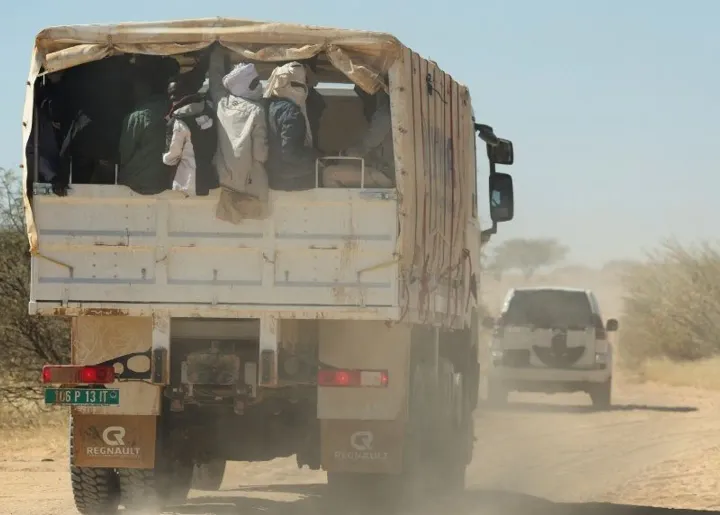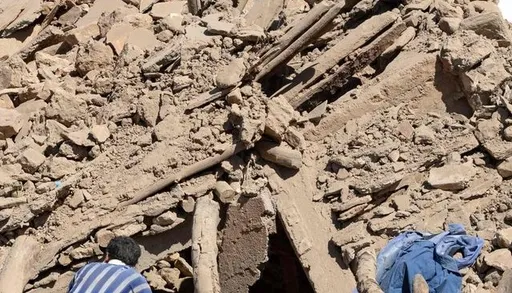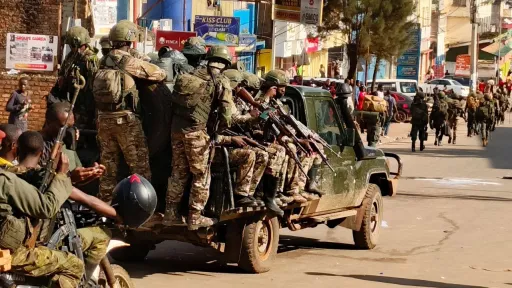The ground beneath their hooves appear to shake as a herd of buffalo charges towards the Chobe river in eastern Namibia, pursued by a pride of lions in hunting formation.
The herd has nowhere to go but forward. At least 90 buffaloes are either trampled to death or plunge over the edge of the cliff into the waters below in a frenzied scramble to escape.
This dramatic scene played out at dawn on September 23 along the northeastern boundary of Botswana's Chobe National Park, a sanctuary for elephants, giraffes, sable antelopes and numerous buffalo herds.
In recent years, however, the park has gained infamy for mass buffalo deaths that have raised questions about one of nature's oldest confrontations, involving predator and prey.
"The lions chased the buffaloes from neighbouring Botswana. Some animals fell from a cliff down into the river and others trampled each other," said Ndeshipanda Hamunyela, a spokesperson for Namibia's tourism ministry.
Images of dead buffaloes floating in the river spread online, making international headlines and reigniting the debate about whether conservation strategies could be tweaked to avert these deadly stampedes taking place in the wilds of southern Africa.
Recurring tragedy
In October 2023, more than 100 buffaloes died in almost identical circumstances when a pride of 12 lions hunting prey drove them into the same river.
Five years earlier, around 400 buffaloes drowned in a single stampede, again believed to have been caused by lions chasing the herd.
The trend isn't limited to Botswana and Namibia. In August 2024, Zambian Wildlife Authority officers found 52 buffalo carcasses along the Musa river in Kafue National Park. Local officials confirmed they were all victims of another stampede.

One school of thought is that recurrent buffalo deaths in stampedes demands better explanations than the usual Darwinian theory of survival of the fittest.
The buzz on social media is that better management of the predator-prey dynamic can avoid unnecessary deaths. Others argue that intervention in nature's cycle could cause more harm than good.
Dr Gladys Kalema-Zikusoka, a Ugandan wildlife veterinarian, advocates a wait-and-watch approach.
"As heart-wrenching as it may appear sometimes, it's not good for these animals when there is unnecessary human intervention. Sometimes, it's good to let nature take its course. Animals always adapt and bounce back in numbers, irrespective of the threats they face," she tells TRT Afrika.
Understated response
Research published by the Ecological Society of America notes that buffalo herds can defend themselves against predators and even kill them.
Buffaloes remain constantly alert to danger, relying on smell, sound and sight to detect predators. When a few animals panic, alarm spreads rapidly through vocalisations, body language and sudden movement. This creates a chain reaction across the herd.
Animals Around the Globe, whose bloggers bring stories about nature and conservation from 67 countries across six continents, cites another scientific study that confirms not every buffalo needs to see the predator to spring into defensive action. Simply watching other herd members run is enough to trigger mass flight.
Adaptive behaviour
So, what triggers these fatal stampedes if animals are alert to imminent danger?
Ecologists view stampeding as an adaptive defence mechanism with tragic consequences. Under predation pressure, buffaloes often form larger herds and move towards open terrain to reduce ambush risk.
While this improves collective safety, it also means that when panic strikes, thousands of hooves can turn deadly.
Stampedes aren't always about flight. In 2020, visitors to South Africa's Kruger National Park watched over 100 buffaloes counter-attack two lions at Mestel Dam, killing one of the predators in the chaos.
Experts believe buffalo stampedes like the one that occurred this month along the Chobe river are inevitable.
Dr Kalema-Zikusoka acknowledges the difficulty of knowing when to act.
"It's really hard to know what to do, and a lot of it is also due to challenges triggered by climate change. The only time humans need to intervene and remove or relocate the animals is if they become endangered."
























